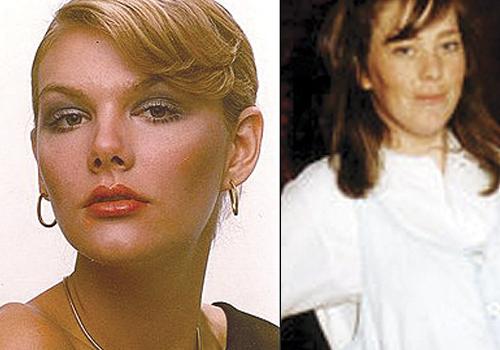‘Model Melissa Halstead feared John Sweeney would kill her’

Sister tells murder trial of prediction two years before mutilated body was found in canal
Published: 10 March, 2011
by JAMIE WELHAM
AN American model found chopped up and dumped in a Dutch canal predicted to her sister that her boyfriend would murder her two years before her body was found, a court has heard.
Speaking via videolink from San Francisco, Chance O’Hara, 63, told an Old Bailey jury that Melissa Halstead prophesied her own death, telling her that if she ever went missing carpenter John Sweeney would have killed her and would “make sure nobody would ever find her body”.
Mr Sweeney, 54, originally from Liverpool but who had addresses in Kentish Town and Finsbury Park, denies murdering Ms Halstead, 33.
He has also pleaded not guilty to the murder of Paula Fields, 31, from Highbury. Her body parts were found in bags in the canal in Camden Town. The deaths took place ten years apart.
The prosecution alleges Mr Sweeney hacked up the bodies with saws because he had a “preoccupation with dismemberment” and a “hatred of women”.
Ms O’Hara said Mr Sweeney had been “possessive” and “angry” when she had come to London on holiday with her 17-year-old daughter to visit her sister in the summer of 1987.
On the second day of evidence on Tuesday, she told the court he attacked Ms Halstead after flying into a rage during a photographic shoot she was doing in a Belgravia flat.
The jury heard Ms O’Hara suffered flashbacks and post-traumatic stress after watching the beating in which mirrors and vases were smashed.
Ms Halstead met Mr Sweeney through her job as a photographer, which she took when modelling work that brought her from New York to London dried up, the court was told.
Ms O’Hara said: “She [Melissa] told me that if she ever went missing that John Sweeney would have killed her. He had threatened that he would kill her and that he would make sure nobody would ever find her body.”
Under cross-examination Ms O’Hara admitted she could not remember if she had told family members about the chilling prophecy in the 18 years between her sister’s death in 1990 and her formal identification by DNA in 2008.
Defence counsel Michael Wood, QC, suggested Ms O’Hara had never spoken of the prophecy until recently. She replied: “I heard Melissa and saw Melissa and you can’t change that.”
Mr Sweeney had followed Ms Halstead to Europe, the court heard. He had spent time in prison in Europe after attacking Ms Halstead with a claw hammer, the court was told, but Ms O’Hara said her sister wanted to “release” him.
Ms O’Hara added: “I could not understand why she would release someone from prison who had already beaten her with a hammer. She said John had cried and begged her. He had no one else. He was sorry and he would leave her alone if she would get him out.”
Her family raised the alarm with police when Ms Halstead did not contact their mother on her birthday on November 2, 1989.
The court heard evidence from Ms Halstead’s former landlord in Amsterdam, who said that when he returned from a holiday in April 1990 she had vanished from her basement flat without paying her rent.
Her mutilated body was dragged from the Westersingel canal in Rotterdam by police officers on May 3, 1990, although at the time she was not immediately identified.
Mr Sweeney was arrested in Gartree Prison last year, where he was serving a life sentence for the attempted murder of a third girlfriend from Kentish Town.
For the prosecution, Brian Altman, QC, told the court that Mr Sweeney went on the run after attacking nurse Delia Balmer with an axe in the flat they shared in Leighton Grove, Kentish Town, in 1994.
The court heard that Mr Sweeney had painted a “lurid” picture depicting a woman’s throat being cut and dedicated to Ms Balmer, which he later blotted out with Tipp-Ex.
It contained the inscription: “May you die in pain.”
After his arrest in prison last year, officers discovered in his cell another artwork depicting a headless body cut into 13 pieces.
The case continues.




Comments
Post new comment